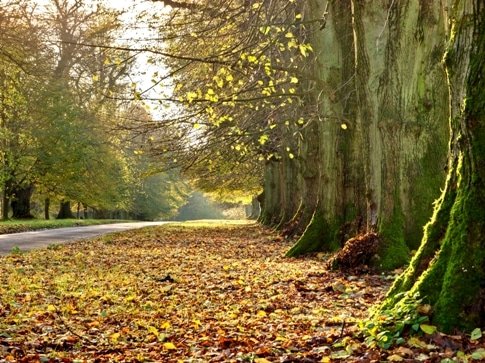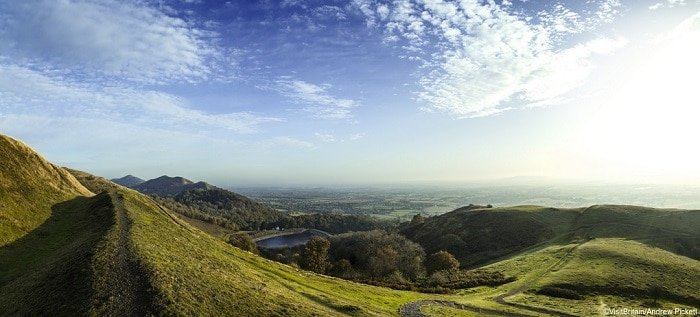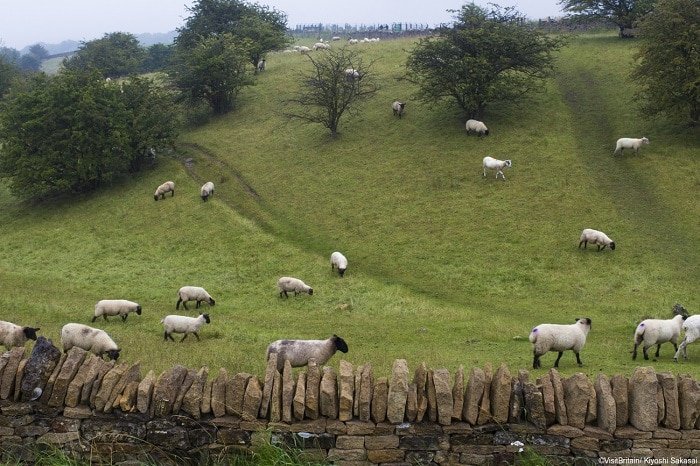
There are 33 designated Areas of Outstanding Natural Beauty in England, 34 if you include the Wye Valley which straddles the border with Wales. Wales has another four of its own, while Northern Ireland has eight. Each AONB varies enormously in size, landscape, and land usage. In this post, we take a look at ten of England’s Areas of Outstanding Natural Beauty.
1. The Chilterns

The Chiltern Hills became an AONB in 1965. Covering 322 square miles in Buckinghamshire, Bedfordshire, Hertfordshire, and Oxfordshire, the Chilterns are a series of gently rolling hills and chalk downlands. With twenty-one percent of the land area covered in woodlands, it is one of the most heavily wooded parts of England. An excellent way to explore is via the 170-mile Chilterns Cycleway which can easily be split into day segments with overnight stops. Also keep an eye open for the Red Kite. Thanks to a project in the early 1990s, the local population of the bird has (to excuse a pun) soared, saving them from possible extinction. Experts estimate that as many as a thousand breeding pairs now nest in the area.
Learn more about visiting the Chilterns at Chilterns AONB.
2. The Norfolk Coast

There’s more than just beach along the 175-square-mile Norfolk Coast AONB; the area also encompasses a lot of agricultural land. But it’s the coastline that attracts so many visitors each year, especially the beautiful stretches of sand at Wells-next-the-Sea and Cromer. The location’s dunes provide a habitat for a diverse range of coastal wildlife, especially the feathered kind. Depending on the time of year, birdwatchers can find terns, nightjars, redshanks, lapwings, marsh harriers, and dozens of other varieties. Meanwhile, the lowlands are an important home for insects and plants, while the neighbouring seas are a vital part of life for both marine mammals and humans alike. Of particular interest is a recently discovered chalk reef, which provides even more biodiversity. Tourism, agriculture, and conservation all have their parts to play along the Norfolk Coast. For more information, visit Norfolk Coast AONB.
3. Shropshire Hills

The Shropshire Hills cover 310 square miles in the southwestern part of the county, ending at the Welsh border. Rolling hills meet lush vallies in an area that is sparsely populated. The largest town is Church Stretton, population 3,000. Only one other town, Clun, lies within the AONB boundaries and that has a population of less than 1,000. The lack of people means plenty of opportunities to find a tranquil, open space. In addition to visiting the famous Offa’s Dyke, take a peaceful stroll along the banks of the River Clun, or the River Teme. Enjoy the views from one or all of the 50 hills, from the highest point at Brown Clee to the smaller but no less picturesque Halford Hill. And if you want a change from walking or cycling, there are lots of other alternatives here, from wild swimming to fell running or paragliding.
Learn more at Shropshire Hills AONB.
4. The Isles of Scilly

With an area of just six square miles, the Isles of Scilly are the UK’s smallest AONB. However, the Isles’ Mediterranean-style climate provides a variety of wildlife and scenery that takes many first-time visitors by surprise. As well as providing a valuable feeding ground for migratory birds and seals, the Scillys have some unique animal species. As the names might suggest, the Scilly Shrew and Scilly Bee do not make their home anywhere else in the UK. Tourism is the principal industry, with people attracted by the climate, the scenery, and the tranquility. And its relatively remote location also makes it an idea spot for stargazing.
Learn more at Isles of Scilly AONB.
5. The Surrey Hills

The Surrey Hills AONB connects to both the North Downs of Kent and the South Downs National Park. Because of this, it lies along three major long-distance walking routes: the North Downs Way, the Pilgrims’ Way, and the Greensand Way. Even if you prefer a shorter stroll, there is no shortage of scenic opportunities within the area’s 163 square miles. Discover quaint villages, fascinating ruins, and did we also mention the wineries? Climb the tower atop Leith Hill and on a clear day you might just glimpse the London Eye. Alternatively visit the charming mini woodland houses created on Limpsfield Common (including Peter Rabbit’s Post Office and Fox Villa). Cycle up Box Hill, admire the purples and yellows of the heathland at the Frensham Ponds or wander around the Old Gunpowder Works at Chilworth.
Learn more at Surrey Hills AONB.
6. The North Pennines

If you are in search of remote and wild within England, the North Pennines are the spot for you. Extending through County Durham, Northumberland, North Yorkshire, and Cumbria, this rugged area is part of the world-renowned Pennine Way. Expect to see red squirrels, wild otters, black grouse, and an abundance of alpine plants that can’t be found elsewhere in England. An innovative new electronic bike network makes exploring the area’s 766 square miles a piece of cake. Simply pick up at one of the hire points and take the work out of cycling. At just £25 a day, helmets, maps, etc. included, it’s a great way to get out and about.
For more information, go to North Pennines AONB.
7. The Mendips

The Mendips are a range of limestone hills to the south of Bristol and Bath. A network of caves and limestone gorges runs through this picturesque landscape patchworked by drystone walls. While many cavers visit the Mendips to go underground, many other visitors prefer to remain above ground, enjoying the grasslands and searching for some of the butterfly species that can be found here. And of course, since this is Somerset, no trip to the Mendips would be complete without a pint of cider and a good-sized slice of Cheddar.
Find out more at Mendip Hills AONB.
8. The Malvern Hills

At only 41 square miles, the Malvern Hills is one of England’s smaller AONBs. It covers a small area of Gloucestershire, Herefordshire, and Worcestershire, but the view from its peaks overlooks 13 counties, the Severn Valley, and parts of Wales. Historically, the area was known for its natural springs, said to contain healing properties. That water flows up through England’s most ancient rocks. The Malverns are also rich in Bronze and Iron Age history with earthworks and fort remains dotting the landscape. A number of walking trails are clearly marked, including options focussing on local literary history, churches, springs, and wildlife.
Learn more about the Malvern Hills.
9. The Northumberland Coast

A forty-mile stretch of desolate yet strikingly beautiful coastline makes up the Northumberland Coast AONB. Key walks include a segment of the England Coastal Path and the Pilgrim’s Way out to the Holy Island of Lindisfarne. Or you might come here for the watersports; kite surfing, windsurfing, diving, layaking, and coasteering are all popular activities. Whether you choose to remain on foot, or take to the water, there are ample opportunities to see local wildlife, from seals to puffins.
Plan your journey to Northumberland Coast AONB.
10. The Cotswolds

The Isles of Scilly may be England’s smallest AONB. At the opposite end of the size spectrum is the region known as the Cotswolds. It stretches across parts of Somerset, Gloucestershire, Oxfordshire, Warwickshire, Wiltshire, and Worcestershire. The stone-walled farmland, historic villages, and grazing livestock that can be seen here conjure up the typical English landscape. The Cotswolds Way walking trail winds through the countryside for 102 miles between Bath and Chipping Camden. It was designated an official National Trail in 2007. However, there are dozens of other walking, cycling, and horse riding trails to explore, not to mention a vast selection of outdoors events throughout the year.
Discover the Cotswolds at Cotswolds AONB.


2 thoughts on “10 Areas of Outstanding Natural Beauty to Visit in England”
Comments are closed.